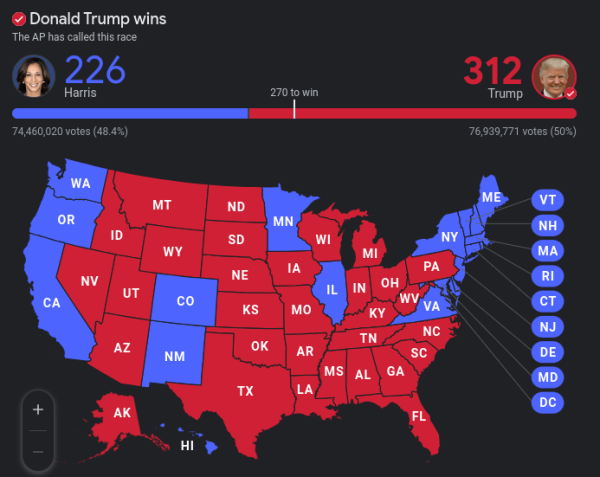Budget Cuts for the Art Department
In President Trump’s first proposed budget, he called for the elimination of the National Endowment for the Arts and the National Endowment for the Humanities and a one hundred percent cut for the Corporation for Public Broadcasting. Currently, the CPB receives $445 million in federal dollars and the NEA and NEH get $148 million each. Altogether they make up less than one percent of the annual federal budget.
While cultural and art institutions that acquire a lot of private donations will not be heavily affected by the budget cuts, it would hit rural and low-income areas the most.
The NEA funds art programs and projects across all 50 states and the NEH provides grants toward cultural institutions like museums, archives, and libraries as well as individual scholars. The CPB finances public television and radio like NPR and PBS.
These grants and funds are often used to directly prop up things like local art programs, public stations, and museums. The Washington Post said, “About 25 percent of NEA block-grant funds go to rural communities and 54 percent to low-income areas.” NPR said that most of the CPB funds go directly to local radio and TV stations. Patricia Aufderheide, founder of the Center for Media and Social Impact at American University said this money is vital in keeping these local stations running and paying for their equipment.
Some art communities and groups have criticized this decision since supporters of the NEA, NEH, and CPB sees these agencies as providers of art, history, and culture to those who might not have been able to experience it on their own. According to the NEA’s website, their funding “gives Americans the opportunity to participate in the arts, exercise their imaginations, and develop their creative capacities.”
Alexandra Nicholis Coon, the executive director of the Massillon Museum in Ohio which uses funds from the NEH said it was “short-sighted” and “disheartening” that Trump and his administration would cut funding for the arts and humanities.
On the other hand, White House Budget Director Mick Mulvaney defends this decision, known as a “hard-power budget.”
“Can we really continue to ask a coal miner in West Virginia or a single mom in Detroit to pay for these programs?” he asked. “The answer was no. We can ask them to pay for defense and we will, but we can’t ask them to continue to pay for the Corporation for Public Broadcasting.”
According to the Associated Press, as of May first, the federal budget is keeping the full funding for the CPB, and increasing the NEA and NEH funding by 2 million each, bringing it up to $150 million. This budget will fund the agencies and the rest of the government until the end of the fiscal year which is September 30th, 2017.
While a win for art and culture organizations across the country, some are still cautious. Kate Shindle, president of Actors Equity, a labor union representing American actors and stage managers, said, “Together, we’ve won the first battle but the fight is far from over. While the NEA will remain funded, for now, Congress is already looking toward the 2018 budget.” When October rolls around and a new budget is made, don’t be surprised if art communities and nonprofits start lobbying Congress for their right to be funded.

Britney Chen is a senior at Bingham. A long time Utahn and a brief native Chinese, she spends her time...


![Photo Credit; Miller, Kim. “City of Asheville prepares for a weekend of winter weather.” City of Asheville prepares for a weekend of winter weather [Ashville], 10 February 2023, https://www.ashevillenc.gov/news/city-of-asheville-prepares-for-a-weekend-of-winter-weather/. Accessed 06 January 2025.](https://binghamprospector.org/wp-content/uploads/2025/01/Screenshot-2025-01-14-7.54.38-AM.png)

